By Maggie Markert
It’s exciting to see a diverse range of client coverage every month, spanning from podcasts and bylines to funding profiles. Each form of coverage holds significance, providing either an insider’s view into a company or product, or presenting distinct perspectives on important national and industry-specific topics.
The Zer0 to 5ive team is dedicated to crafting powerful narratives and viewpoints for our clients. Our goal is to pinpoint and secure the most fitting and pertinent opportunities available so that our clients can be seen and heard.
Here are a few of the Zer0 to 5ive team’s placements from November.
NPR’s Teaching Matters for CENTEGIX
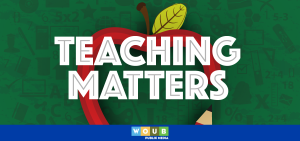
Oftentimes, journalists want to speak to individuals who have direct experience with a topic or issue. In education, that means working alongside our clients with educators and school or district leadership.
With CENTEGIX, the Zer0 to 5ive team identified a district leader to discuss the importance of creating a multi-layered safety plan in K-12 schools and offered them to speak with NPR’s Teaching Matters podcast. During the interview, the interviewer and audience also received a real-time example of how quickly the district leader’s schools were able to initiate a lock-down within seconds through CENTEGIX’s CrisisAlert badge. Listen to the podcast here.
Technical.ly for Imagine Pharma
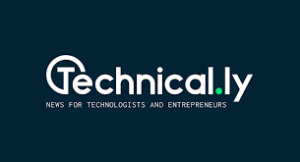
Funding is a major milestone in a company’s journey and a great news hook for storytelling. To elevate a funding announcement into a larger profile story, public relations professionals can offer journalists the opportunity to delve into the significance of the funding and its implications.
For Imagine Pharma, the Zer0 to 5ive team leveraged the company’s recent $32.5 million funding round to secure interest from Technical.ly in conducting interviews for a profile story. You can read the article here.
Ed Post for SchoolStatus

Awareness days, weeks, and months can play an important role in developing a compelling story. They lend relevance and timeliness to a point of view a company may have on a key topic.
For SchoolStatus, the Zer0 to 5ive team identified Family Engagement Month as an opportunity to engage the media on why meaningful school-home connections in K-12 education should be supported. This outreach resulted in multiple opportunities, including a byline opportunity with Ed Post. The article can be read here.
Compliance Podcast Network for Qmulos
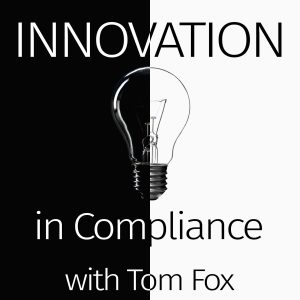
Public relations professionals must stay on top of key news trends and current events. One trend that has consistently remained at the forefront is cybersecurity. This topic has many different aspects and identifying the right one for a client is crucial.
On behalf of Qmulos, the Zer0 to 5ive team focused on the topic of cybersecurity compliance to secure an interview with Compliance Podcast Network’s Innovation in Compliance Podcast with Tom Fox. You can listen to the podcast episode here.
To learn more about how Zer0 to 5ive can help drive visibility and industry leadership for your company drop us a line.
Insights from Journalists on Effective Collaboration with PR Professionals: A Q&A with Tech Reporter Steven AquinoBy Sydney Stressman
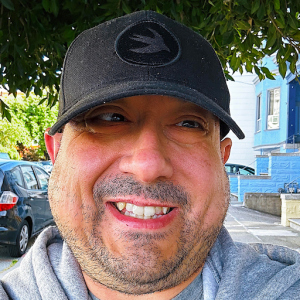
I have worked with Steven Aquino many times and have gotten to know him well over the years. His work as an accessibility and assistive technology reporter holds so much importance. He has my utmost respect. Today, I had the opportunity to interview Steven about his job, reporting on accessibility in the technology sector, and his perspective on working with public relations professionals.
Thank you, Steven, for taking the time to share your insights with me. You can read Steven’s stories on Forbes here: https://www.forbes.com/sites/stevenaquino/
Can you briefly introduce yourself and your background as a technology reporter?
Hi there! My name is Steven Aquino, and I’m a freelance technology reporter based in San Francisco. I’ve been running a one-man newsroom full-time since May 2013.
You can read more about my journey on my portfolio site.
As to my beat, I cover all things accessibility and assistive technologies. Classically, that pertains to the hardware and software of products like the iPhone. Over time, I’ve grown and evolved my coverage to encompass lots of ways disability and technology intersect. They include healthcare, adaptive clothing, autonomous vehicles, and even Hollywood with film and television. So long as tech companies such as Amazon and Apple insist on leveraging their massive war chests to roll their own streaming services, the tie-ins will remain strong and utterly relevant.
How long have you been reporting on technology/DEI topics, and what motivated you to focus on this field?
As I said, I’ve been a journalist since 2013. Next May marks 11 years.
How I got started in the industry is kind of a long story, but suffice it to say I’ve always loved to write and I’ve always been told I’m *really* good at it. In my prior life teaching special education preschool, I was the school’s unofficial IT person—always setting up devices like computers, iPads, iPods, and more. We used iPads to augment the curriculum with my students, and I wrote about it in my first-ever bylined story. That story immediately went semi-viral, so much so that it got picked up by Apple and their PR team reached out, which led me to snowball to opportunity after opportunity after opportunity that shaped what my career looks like today.
Can you share examples of successful collaborations or interactions you’ve had with PR reps? What are some common misconceptions reporters might have about working with PR folks?
I have experience covering companies big and small, from behemoths like Apple, Google, and Microsoft to smaller, scrappy startups. I’ve attended media events and received regular review units of key products such as the iPhone. Those all involved cultivating and nurturing relationships with PR folks over all these many years.
As for misconceptions, I think reporters are oftentimes jaded in thinking PR folks exist merely to market and push happy/favorable coverage. That’s true to a certain extent, but the majority of my interactions are with people who not only have a job to do for a living, but who are genuinely interested and believe in whatever they’re selling.
What communication strategies do you find most effective when working with PR professionals, such as pitches (length), press releases, research, and more?
I typically work with the usual email pitches and press releases. I also find email interviews more accessible for me, although I know you learn in journalism school they aren’t the best because it’s harder to press people and ask follow-up questions. I get that logic, but email interviews really do make my job easier and more expedient.
I’ve also found texting with PR people more accessible too. It’s easier and more efficient than using email and has the side benefit of being an avenue by which to cultivate the personal end of the relationship. I’m very much an introvert, and texting has enabled me to establish long-standing relationships with people that transcend work. It’s been a great tool with which to network on multiple levels. Of course, I’m not super close with every single person this way, but the point is having a person’s personal number implies trust and care.
How can PR professionals best tailor their communications to meet the needs of technology reporters? Are there any specific elements or information that you consider essential in a press release or pitch related to technology/DEI topics?
I think it’s important not just to mass-mail a press release and call it a day. If possible, I think it’s more prudent (for both of us) to have the comms person tell me a story—tell me what, then why, and let me decide. Sometimes a press release is okay and all I need, but more often they feel sterile and lack the deeper context that’s crucial for my reporting on such an abstract, wide-ranging topic and community.
What are some best practices for PR professionals to build positive relationships with reporters of any beat? How can they effectively pitch stories and information to you?
Don’t be transactional. I know what your job is and you know mine. But we’re also human beings who thrive on interpersonal relationships. You don’t have to be besties with everybody—that’s impossible—but some of the best relationships I enjoy right now masterfully straddle that line between professional and personal. And we’re both better off.
Is there anything else you’d like to share with our readers about the dynamics of working with PR professionals?
Three big points I get asked about an awful lot.
- Just because I agree to interview your client does not automatically guarantee coverage on my end. It’s kinda like a job interview—I’ll interview a bunch of people, but I’m not hiring all of them.
- I’m not sending you interview questions in advance unless we’ve agreed on doing an email Q&A.
- And I’m definitely not sending you my story prior to publication so you and/or your client can inspect it. That’s not at all how reporting works, unless in certain circumstances.
By Maggie Markert
Storytelling is critical to successful media relations programs. Offering a compelling narrative helps public relations professionals break through the hundreds or thousands of pitches journalists receive each day. These stories can be a powerful or unique point of view on a trend or current event, a robust customer case study, or a strong piece of research.
Collaborating closely with our clients, the Zer0 to 5ive team discovers these narratives and develops compelling pitches for journalists. As part of every pitch, the team provides comprehensive context, significance, and exclusive access to expert sources.
Here are a few of the Zer0 to 5ive team’s story-driven placements from October.
WIRED for Sony AI

Emphasizing the importance of research and connection to overarching trends is key to capturing the attention of top journalists. However, providing an adept expert proficient in conveying that storyline remains absolutely essential.
For Sony AI, the Zer0 to 5ive team outlined the significance of its research on skin tone annotation in computer vision and offered the lead authors to speak with the media. This particular pitch piqued WIRED’s interest and that of several other outlets, resulting in extensive coverage that delved into the research details. Read the WIRED article here.
PYMNTS for Sony Innovation Fund
![]()
Journalists consistently seek fresh and distinctive viewpoints that offer alternative perspectives on trending subjects. It’s crucial for public relations professionals to share glimpses of these perspectives with journalists as a part of their outreach efforts.
On behalf of Sony Innovation Fund, the Zer0 to 5ive team provided a few points to PYMNTS on the team’s view on Web3 venture capital investment. These viewpoints captured the outlet’s editor’s attention, leading to an interview request for two experts from Sony Innovation Fund regarding the topic. Read the PYMNTS article here.
HD Trucking for Nauto
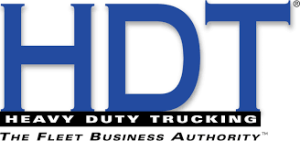
Many media outlets seek sources for prearranged editorial stories, a terrain familiar to most PR professionals, posing a challenge to secure inclusion. The key factor in gaining inclusion within these stories is presenting a resource capable of offering a unique and distinctive perspective unlike any other.
Ahead of HD Trucking’s October story on distracted driving, the Zer0 to 5ive team provided the background and potential perspective that Nauto‘s founder and CEO could offer. This resulted in an interview as well as multiple quote inclusions in the feature story. Read the HD Trucking article here.
Top Education Placements
Journalists in the education space often seek insights directly from educators and students because their voices provide authenticity and depth for stories. These perspectives give journalists, and eventually readers, a first-hand account of challenges they are facing or new approaches they are implementing to improve education experiences.
For CENTEGIX, the Institute for Multi-Sensory Education (IMSE), and YouScience, the Zer0 to 5ive team worked closely with client teams to pinpoint student and educator resources that provide poignant firsthand experiences for several stories.
KYW In Depth Podcast for CENTEGIX

Listen to the podcast here featuring a deputy superintendent and the company’s Chief Development Officer offering insight into how CENTEGIX’s technology is used to keep students and teachers safe.
Education Week for IMSE
![]()
Read the story here featuring a number of teachers in Albuquerque, New Mexico who were trained in the Orton-Gillingham method, based in the Science of Reading, to help boost student literacy.
FOX 13 for YouScience

Watch the segment here featuring a few students and educators from a Utah district discussing how YouScience has helped identify potential career paths.
To learn more about how Zer0 to 5ive can help drive visibility and industry leadership for your company drop us a line.
Q&A With K-12 Education Journalist Kara Arundel: Working with PR Professionals for Effective CollaborationBy Lindsay Hull

Kara Arundel, Education Reporter at K-12 Dive
I’ve been fortunate to collaborate with Kara Arundel, who currently serves as an education reporter for K-12 Dive, on various educational stories over the years. Normally, it’s Kara who works her journalistic magic to interview my clients. However, today, I had the honor of interviewing Kara to gain her perspective on working with public relations professionals and achieving effective communication. She also generously shared some valuable advice for those in the field of PR.
Thanks to Kara for taking the time to conduct this interview with me! You can read Kara’s stories on K-12 Dive here: https://www.k12dive.com/editors/karundel/
Introduction
LH: Can you briefly tell us about your background as a K-12 education reporter?
KA: I knew I wanted to be a news reporter since I was in middle school. I still feel so lucky I am still working in a job I love and am passionate about. I am a senior reporter at K-12 Dive, a publication of Washington, D.C.-based Industry Dive, which is a business journalism company. Here, I cover national education issues from birth through grade 12. Specific education topics I write about include early childhood education, special education, education funding and Congress.
LH: How long have you been reporting on education topics, and what motivated you to focus on this field?
KA: I have worked as an education reporter for the past two decades, first at newspapers in Virginia and Florida, and more recently for online publications. Everywhere I’ve worked, I’ve met people dedicated to improving schools and supporting students. I’m so grateful to everyone who has helped me tell these important stories.
Collaboration with PR Professionals
LH: Can you share examples of successful collaborations or interactions you’ve had with PR reps?
KA: My daily reporting is very much influenced by PR professionals, whether they are alerting K-12 Dive of an upcoming release of a report, a meeting about a top-of-mind topic, or an innovative school-based program.
Some of the most successful collaborations I’ve had with PR professionals happen when they hear about a school- or district-based promising practice and share that information with me. I can then dig into that topic and ask school and district-based educators what steps were taken to make that program successful, what were the roadblocks and what advice would they have for others who may want to replicate the model. Our readers appreciate learning about how schools and districts are addressing barriers in education, such as chronic absenteeism, teacher shortages and funding shortfalls.
We like to focus on these advice-driven stories and include the real-life examples of the efforts educators are undertaking in the schools. PR professionals are extremely helpful in alerting us to these examples.
Effective Communication
LH: What communication strategies do you find most effective when working with PR professionals, such as pitches (length), press releases, research, etc.?
KA: The communication strategies from PR professionals that I find most effective are emails pitching a unique education-related angle, a promising practice, insights into school and district operations, and data or research about timely education issues.
LH: How can PR professionals best tailor their communications to meet the needs of education reporters?
KA: We receive many emailed pitches a day and honestly it can be difficult to sort through all the messages. This is why the subject line is critical to encouraging reporters to open the message to learn more. I do try to read all my messages, but I would encourage PR professionals to send follow-up messages or to call reporters if they don’t get a response.
It is helpful when pitches are as specific as possible. That said, I also respond to and appreciate shorter emailed pitches that give a brief overview and ask if I’m interested in learning more.
At K-12 Dive, we write a mix of shorter articles, called briefs, and longer articles. The longer articles often take several days of reporting and interviews with multiple sources. I appreciate pitches for both of these story formats.
LH: Are there any specific elements or information that you consider essential in a press release or pitch related to education topics?
KA: One of the biggest pieces of guidance I can share is how important it is for education PR professionals to read the education news so they can help put a spotlight on unique activities that relate to current issues facing schools. I really appreciate pitches that highlight real-life examples or case studies of how a school or district is addressing problems in education.
Pitches that are sent ahead of an anticipated news event, such as an offer to review an embargoed report or an interview with an education professional, are most helpful as we plan our short- and long-term news coverage. Also, it is key for reports and press releases to include dates so we can verify how timely the release is.
Story pitches that are overly promotional of a product or service from a for-profit business tend not to get as much attention because our news stories cannot be viewed by readers as being influenced by paid or sponsored content.
Advice for PR Professionals
LH: What are some best practices for PR professionals to build positive relationships with reporters of any beat?
KA: I view the work between news reporters and PR professionals as teamwork in sharing stories with readers to help them better understand a topic. It’s most helpful when PR professionals understand that our news stories can’t promote a for-profit service or product.
LH: How can they effectively pitch stories and information to you and your colleagues?
KA: The PR professionals I work with most frequently have proven track records of being trustworthy and reliable. They have delivered on promises of interviews with education leaders, are available for clarifying follow-up questions and are familiar with our news coverage. They also are understanding when an interview or pitch doesn’t lead to a story. I am often working on several stories at the same time and, depending on the news cycle, I may request an interview or information right away or several weeks or months after the first pitch was sent.
It’s helpful for PR professionals to know the “beats” or focus area of each reporter so they can tailor messages to the reporter for that specific topic. The K-12 Dive team talks regularly, and we are all familiar with what stories each of us is working on so there is no duplication of efforts.
Closing Thoughts
LH: Is there anything else you’d like to share with our readers about the dynamics of working with PR professionals?
KA: I strongly believe that there are a lot of untold stories in education. Don’t be hesitant to pitch a story idea to reporters even if you are unsure how it may land. There are several times I will get a story pitch and it aligns with an article I’m already working on — or sparks a new idea. We all need to help tell the stories about the challenges and successes our schools are facing.
0to5 Media Moments: September 2023
By Maggie Markert
Thought leadership is a critical facet of any successful public relations program for any organization. It doesn’t matter if you are a Fortune 500 company, a startup, or a research organization – thought leadership offers a valuable avenue to articulate your innovative ideas and can serve as an excellent method to increase your visibility.
That’s why our public relations team at Zer0 to 5ive strives to build strong thought leadership in every program we offer clients.
Here are a few of the Zer0 to 5ive team’s thought leadership-based placements from September.
MIT Technology Review for Sony AI

Research is a powerful thought leadership tool in public relations. Not only are journalists always seeking relevant data and insights to bolster their stories, but they are actively seeking expert sources capable of interpreting such research and connecting it to wider trends and topics.
Our team recently worked with Sony AI to promote the unveiling of new research on skin tone annotation in computer vision and pitched it to MIT Technology Review. This research directly correlated to a broader topic the outlet was working on about bias in computer vision systems, which opened up the opportunity for Sony AI researchers to speak with the journalist and be quoted in her story. Read the article here.
Forbes for Qmulos

Startup founders are great sources of thought leadership commentary often because of their deep industry and technical knowledge of a certain area. This thought leadership, in many cases, directly supports the challenge they seek to solve through their company.
For Qmulos, our team pitched a story of the company’s founder and how it relates to the ongoing challenges in the world related to enterprise security, compliance, and risk management. This storyline captured the interest of a Forbes writer who published a profile piece on the founder. Read the profile here.
InformationWeek for Sony Innovation Fund
![]()
Journalists rely on expert commentary to help write their stories. In most cases, journalists seek a wide variety of voices that can help them craft a well-rounded piece. Often, to help gather commentary from sources, journalists will share queries directly with their public relations or organization contacts through email, social media, and distribution services. As public relations professionals, we are responsible for identifying and vetting these opportunities and collaborating with expert sources to provide insightful perspectives for the journalists’ stories.
On behalf of Sony Innovation Fund, our team identified an opportunity to submit commentary on how artificial intelligence impacts artificial reality (AR). The team worked directly with the organization’s entertainment technology expert to craft compelling insights that could be shared for consideration with the journalist. Some of those insights appeared throughout the journalist’s piece weeks later in InformationWeek. Read the story here.
Total Retail for eTail Pet

Bylines are a great vehicle for showcasing thought leadership. While these pieces cannot promote your organization or solutions directly, they can help build your credibility and position a leader as a key expert on a topic related to your work.
Our team worked with eTail Pet to pitch a byline article from the company’s expert source on the effective use of customer data to enhance return on investment (ROI) for retail stores. The thoughtful and comprehensive piece was accepted and published by Total Retail. Read the byline here.
DevOps.com for Onymos

If you’re looking to capture the attention of a journalist for thought leadership, one effective approach is to express a bold and assertive opinion, often referred to as a ‘stake in the ground.’ This type of perspective is frequently unique and thought-provoking – or sometimes provocative – and sets it apart from the countless opinions journalists receive.
The team at Onymos is comprised of experts who offer thoughtful and bold opinions, which often pique the interest of journalists. One example of this was a byline questioning whether or not generative AI would replace software developers. The piece was pitched to DevOps.com by our team and later published. Read the byline here.
To learn more about how Zer0 to 5ive can help drive visibility and industry leadership for your company drop us a line.
Celebrating National Publicist Day with Zer0 to 5ive: 6 Tips from the Zer0 to 5ive TeamBy Sydney Peterson
Public relations or “PR” professionals are often working behind the scenes to help support business goals. PR work includes a wide range of responsibilities from reputation management to developing PR strategies, to drafting press releases and pitching stories to the media. In 2015, National Publicist Day was founded on October 30 as a day to celebrate and show appreciation for professionals working in the public relations industry. In honor of National Publicist Day, Zer0 to 5ive employees shared insights from their experiences and advice for current and aspiring PR professionals.
Here are six tips on working in public relations from the team:
“Be proactive and curious! Your managers, colleagues, and, especially, your clients love when they see proactivity and ongoing curiosity from you whether it be in the form of newsjacking/rapid response opportunities, asking questions related to a client’s industry, and more. These things help show that you are not only eager to get results but that you are being creative in your thinking and strategy. Being able to continually showcase both of these characteristics will take you far in PR and they will help you generate a greater impact.” – Maggie Markert, Director
“Read a lot! Reading and subscribing to industry newsletters can help you stay up-to-date on trends and current topics that are being covered.” – Annmarie Ely, Senior Strategist
“I once received invaluable advice from a professor who emphasized that PR is far from glamorous moments in a limousine with celebrities. Her words proved to be spot-on. What I’ve learned is that successful PR hinges on the cultivation of relationships. The capacity to engage with clients, peers and colleagues, journalists, stakeholders, and the public holds utmost importance.” – Lindsay Hull, Principal
“Be sure to know your publications – best contacts, what they’re covering, if they accept bylines, etc.” – Chelsea Lindner, PR Strategist
“Don’t let the inevitable “no” discourage you when it comes to pitching. It’s very common to encounter more negative responses than positive ones in the world of PR. Journalists often find themselves buried under a mountain of tasks and competing deadlines – they can’t say yes to every story. When you do receive a “no,” don’t hesitate to ask for feedback. Was it a matter of timing, scope, or a misalignment with the outlet’s focus? This feedback can provide valuable insights to inform your next pitch and increase the likelihood of a positive response down the road. The key to mastering the art of PR is persistence. Keep refining your pitch, honing your message, and approaching it from different angles. Repeated “no” responses can be valuable lessons that help you better understand what resonates with your audience.” – Andie Levine, Director of Content and Social Media
“PR is not for the faint of heart, it takes persistence, tenacity, a thick skin, ability to multitask 1,000 things at once and work under constant deadlines and pressure, for starters. So, if you are interested in PR, go into an area of PR that you have a passion for or are interested in. For example, technology, travel, fashion, food, public health, entertainment, video games, politics/policy, crisis comms…There are so many different options. Working in an area you love will help you get through the tough times.” – Jennifer Moritz, Managing Principal
To learn more about how Zer0 to 5ive can help drive visibility and industry leadership for your company drop us a line.
Celebrating International Podcast Day: A Roundup of Zer0 to 5ive Clients on PodcastsBy Sydney Peterson
Podcasts are a great resource for entertainment, news, education, interviews, and more. According to the Pew Research Center, about 50% of U.S. adults listened to a podcast in the last year and, almost 20% listen to a podcast nearly every day. The Zer0 to 5ive team actively reaches out to podcasts to secure opportunities for our clients to share their news and expertise. In honor of International Podcast Day, here is a glimpse at just a few of the podcasts where our clients have been featured over the past year.
YouScience Shares Insights on Career Guidance on Inside Higher Ed’s Pulse Podcast
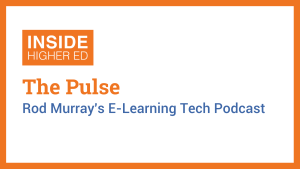
Edson Barton, CEO of YouScience, was a guest on Inside Higher Ed’s Pulse podcast. He joined Rodney B. Murray, host of the podcast, to discuss how YouScience’s career guidance platform helps high school students. Listen to the episode here.
K4Connect Discusses Successful Investment Round on the What’s Next Longevity Deal Talk Podcast
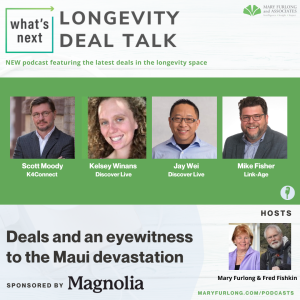
K4Connect CEO Scott Moody was featured as a podcast guest on the What’s Next Longevity Deal Talk podcast. Scott joined hosts, Mary Furlong and Fred Fishkin, to discuss the company’s recent funding of nearly $9 million and raising money in a tough environment. Listen to the episode here.
Greenphire Shares Insights on Clinical Trials on KYW Newsradio’s In Depth Podcast
Jim Murphy, Greeenphire CEO, was a guest on KYW Newsradio’s In Depth podcast. Jim spoke with podcast host, Matt Leon, about clinical trials, how to improve them, and why it is crucial to have a diverse range of participants. Listen to the episode here.
Sony AI Shares Insights on Artificial Intelligence with the TWIML AI Podcast

Zer0 to 5ive coordinated an interview with Alice Xiang, Lead Research Scientist at Sony AI and Global Head of AI Ethics at Sony Group Corporation, with the the TWIML AI Podcast. On the show, Alice, an expert in AI, shared her insights on artificial intelligence, as well as her research on privacy and fairness in computer vision. Listen to the episode here.
Onymos Joins the The InfoQ Podcast to Discuss Data Privacy, Retention, and Security
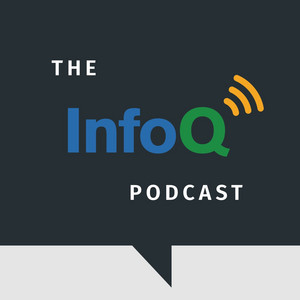
Onymos Founder and CEO Shiva Nathan was a guest on The InfoQ Podcast. In the episode, Shiva discussed data security, privacy, retention, and enabling a security mindset in development. Listen to the episode here.
What podcasts do you listen to?
To learn more about how Zer0 to 5ive can help drive visibility and industry leadership for your company drop us a line.

